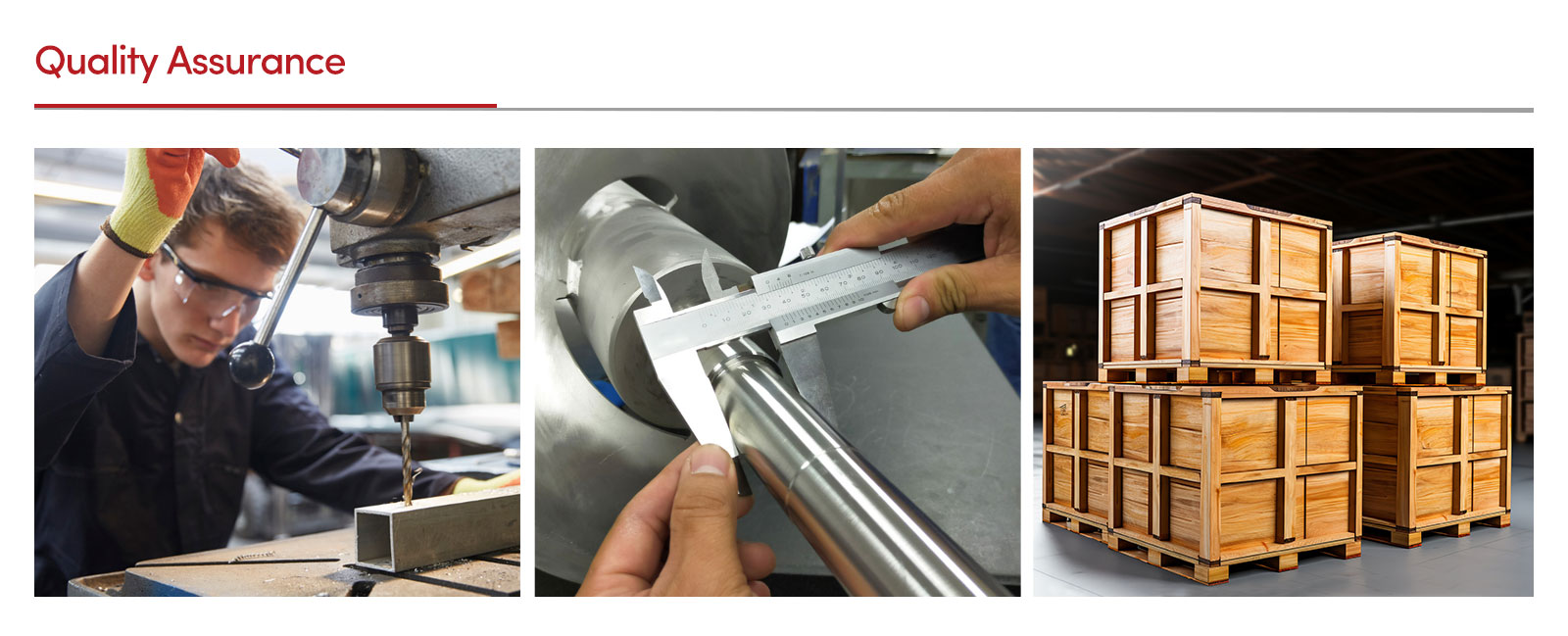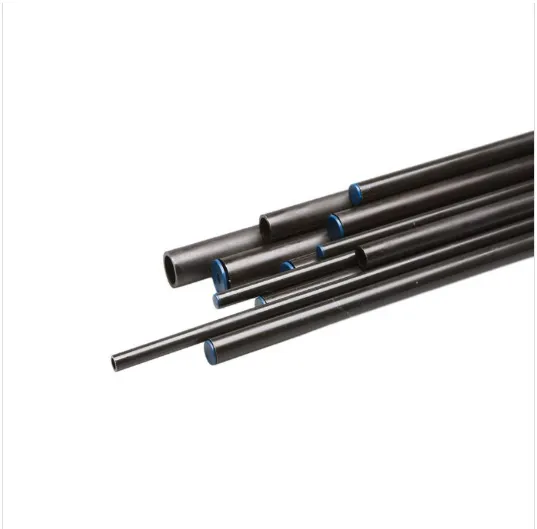Why Rectangular Structural Steel Tubing Is Shaping America’s Future: Unlocking Durability, Design, and Dependability
Imagine this. You’re in the middle of a vital construction project. Time is running out. The clock is ticking. Your reputation, your client’s trust, and millions of dollars are on the line. But what if you could eliminate delays, cut costs, and boost strength—all with one material? Well, that’s exactly what rectangular structural steel tubing
delivers.
In 2023 alone, the U.S. spent over $1.98 trillion on construction—much of it relying on steel frameworks (US Census Bureau). Now, more builders and engineers are shifting to rectangular structural tubing. Why? Because it solves pain points: minimizing material waste, maximizing load capacity, and simplifying fabrication thanks to its unique profile.
Still relying on outdated, inefficient sections? Keep reading, and see what’s possible when you choose welding rectangular tubing for your next project—built for performance, priced for value.

(rectangular structural steel tubing)
The Technical Edge: Why Rectangular Structural Steel Tubing Leads the Industry
Let’s break it down. Why is rectangular structural tubing a game-changer? The answer starts with its shape. The flat surfaces and 90-degree corners mean more surface area for welding rectangular tubing. You get cleaner, stronger joints without the guesswork.
Want reliable numbers? Check out these average properties for rectangular structural steel tubing (ASTM A500 Grade B):
| Specification |
Value |
| Yield Strength |
≥ 46,000 psi |
| Tensile Strength |
≥ 58,000 psi |
| Elongation |
23% |
| Wall Thickness Range |
0.083” - 0.750” |
| Common Widths (inches) |
2" x 1", 6" x 4", 12" x 8" and more |
Material performance isn’t just numbers. It means greater peace of mind on every weld. Rectangular tubes resist bending. They shrug off torsion. When every ounce of integrity matters, these tubes don’t flinch. That’s superior engineering, ready to work for you.
Manufacturer Comparison: How to Choose the Right Rectangular Tubing Supplier
Not all steel is created equal. Who you buy from matters. Let’s compare key factors:
| Manufacturer |
Certifications |
Custom Sizes |
Turnaround Time |
| Domestic Mill A |
ISO 9001, ASTM |
Yes |
1-2 weeks |
| Global Mill B |
ASTM Only |
Limited |
2-4 weeks |
| Our Company |
ISO 9001, ASTM, AWS |
Yes (fully customizable) |
48-72 hours (rush service) |
Top tip? Look for ISO-certified producers with American Steel certification. Ask about custom fabrication. Check their reviews. After all, your entire project rides on their quality. Don’t settle for less.
A Custom Solution for Every Challenge: Tailoring Rectangular Tubing to Your Needs
No two jobs are alike. Sometimes you need wide spans. Sometimes tight corners. The beauty of rectangular structural tubing lies in its flexibility. You can order precise lengths. Select wall thickness down to the decimal. Choose coatings for weather, salt, or heavy wear.
Let’s look at a typical custom spec:
- Material: ASTM A500 Grade B, C, or ASTM A1085
- Size: 6" x 4" x 0.375" wall, 20-foot length
- Finish: Hot-dip galvanized for outdoor use
- Requirement: Laser-cut holes at 6" intervals
- Welded connections, certified to AWS D1.1 standard
Installers love how easy rectangular tubing is to drill, weld, bolt, or finish. No tricky curves. No wasted cutting time. It’s as plug-and-play as steel gets.
Application Case Studies: Rectangular Structural Tubing in Action
Need proof? Major infrastructure relies on rectangular structural tubing every day. Let’s see how American builders use it:
-
Stadiums & Arenas: Across Texas, roof trusses, bleachers, and support columns use 12"x8" rectangular tubing. Result? Fast assembly. Minimal onsite welding. Lifetime performance.
-
Logistics Warehouses: 6"x4" tubing forms racking arms, mezzanines, and conveyor supports. Each joint is easy to weld, quick to align. Loads are predictable. Inspections are simple.
-
Transportation Bridges: Engineers pick rectangular tubes for their high torsional resistance. That helps span longer distances without extra steel weight.
-
Custom Homes: Modern design? Steel frames are in every wall, every staircase, every deck. Rectangular tubing gives architects unbreakable freedom.
-
Renewable Energy: Solar panel mounts and windmill towers use corrosion-resistant rectangular tubing. You get years of weatherproof reliability.
Expect more. With rectangular structural steel tubing, innovation comes standard. American cities are rising with it—shouldn’t your projects do the same?
Conclusion: Get the Rectangular Structural Tubing Advantage Today
The verdict is clear: rectangular structural steel tubing stands at the forefront of American manufacturing. It delivers unmatched versatility, robust engineering, and streamlined installation. If you want cleaner welds, lower costs, and lasting reliability, this is your path forward.
Don’t let outdated habits hold you back. Partner with an experienced, ISO-certified manufacturer who puts your specs first. Demand quick quotes, fast shipping, and premium quality. Your projects deserve the best—and you can demand it.
Are you ready to transform your next build? Choose our American-made rectangular structural tubing today. Call 1-800-STEELNOW for a quote, or email our technical team for free design assistance. Let’s build greatness—together.
Your Steel Company USA
Premium Rectangular Structural Steel Tubing Manufacturer
1250 Commerce Drive, Dallas, TX 75207
Phone: 1-800-STEELNOW • Email: sales@yoursteelco.com
— Trusted by America’s top builders since 1985 —
FAQs: Rectangular Structural Steel Tubing
Q1: What Is Rectangular Structural Steel Tubing Used For?
Rectangular structural steel tubing is widely used in building frames, bridges, support columns, machinery, racks, and custom metal fabrication. Its shape makes it ideal where strong, straight lines are needed and high load capacity is required.
Q2: How Does Welding Rectangular Tubing Differ From Other Shapes?
Its flat surfaces make welding rectangular tubing easier and stronger than round or angled tubing. Welds are cleaner, and stress is distributed more evenly along straight edges, improving structural integrity.
Q3: What Sizes of Rectangular Structural Tubing Are Available?
You can get standard sizes like 2" x 1", 6" x 4", and 12" x 8". Wall thickness runs from 0.083” to over 0.750". Custom lengths and special dimensions are available upon request from top U.S. manufacturers.
Q4: Is Rectangular Structural Tubing Stronger Than Round Tube?
For bending and axial loads, rectangular structural tubing can be stronger than round tube of the same weight. Its flat sides resist warping and make welding easier for load-bearing applications.
Q5: What Is the Best Method to Weld Rectangular Structural Tubing?
MIG or TIG welding is most popular. Use clean, prepared surfaces and match filler metal to base steel. For critical builds, request certified welders and compliance with AWS D1.1 or AISC standards.
Q6: How Do I Prevent Corrosion in Rectangular Structural Tubing?
Choose galvanized or powder-coated finishes for outdoor use. Stainless steel tubing is best for harsh or marine environments. Regular inspection and touch-up painting extend service life.
Q7: Can I Get Custom-Fabricated Rectangular Steel Tubing?
Absolutely! Leading manufacturers offer custom lengths, wall thickness, drilled holes, and pre-welded connections. Just send your specs for a personalized quotation—usually within 24 hours.

(rectangular structural steel tubing)
FAQS on rectangular structural steel tubing
Q: What is rectangular structural steel tubing?
A: Rectangular structural steel tubing is a hollow, rectangular-shaped section made from steel. It is commonly used in construction and fabrication due to its strength and versatility. Its structure provides excellent support in building frames and machinery.
Q: What are the standard sizes for rectangular structural tubing?
A: Rectangular structural tubing comes in a variety of sizes, typically identified by width, height, and wall thickness. Common sizes range from 2x1 inches up to 12x8 inches or more. The wall thickness can also vary according to structural needs.
Q: How is welding rectangular tubing typically performed?
A: Welding rectangular tubing usually involves MIG or TIG welding processes for strong, clean joints. Proper surface preparation and alignment are essential for structural integrity. Always use the correct filler material and technique for steel.
Q: Where is rectangular structural steel tubing usually used?
A: This tubing is widely used in the construction of building frames, bridges, and support structures. It's also popular in manufacturing machinery, trailers, and furniture. Its shape and strength make it ideal for load-bearing applications.
Q: What are the advantages of using rectangular structural tubing?
A: Rectangular structural tubing offers high strength-to-weight ratio and design flexibility. It's easy to fabricate and weld, making it suitable for a wide range of projects. Its flat surfaces also allow for simple connections and cladding.
 Afrikaans
Afrikaans  Albanian
Albanian  Amharic
Amharic  Arabic
Arabic  Armenian
Armenian  Azerbaijani
Azerbaijani  Basque
Basque  Belarusian
Belarusian  Bengali
Bengali  Bosnian
Bosnian  Bulgarian
Bulgarian  Catalan
Catalan  Cebuano
Cebuano  Corsican
Corsican  Croatian
Croatian  Czech
Czech  Danish
Danish  Dutch
Dutch  English
English  Esperanto
Esperanto  Estonian
Estonian  Finnish
Finnish  French
French  Frisian
Frisian  Galician
Galician  Georgian
Georgian  German
German  Greek
Greek  Gujarati
Gujarati  Haitian Creole
Haitian Creole  hausa
hausa  hawaiian
hawaiian  Hebrew
Hebrew  Hindi
Hindi  Miao
Miao  Hungarian
Hungarian  Icelandic
Icelandic  igbo
igbo  Indonesian
Indonesian  irish
irish  Italian
Italian  Japanese
Japanese  Javanese
Javanese  Kannada
Kannada  kazakh
kazakh  Khmer
Khmer  Rwandese
Rwandese  Korean
Korean  Kurdish
Kurdish  Kyrgyz
Kyrgyz  Lao
Lao  Latin
Latin  Latvian
Latvian  Lithuanian
Lithuanian  Luxembourgish
Luxembourgish  Macedonian
Macedonian  Malgashi
Malgashi  Malay
Malay  Malayalam
Malayalam  Maltese
Maltese  Maori
Maori  Marathi
Marathi  Mongolian
Mongolian  Myanmar
Myanmar  Nepali
Nepali  Norwegian
Norwegian  Norwegian
Norwegian  Occitan
Occitan  Pashto
Pashto  Persian
Persian  Polish
Polish  Portuguese
Portuguese  Punjabi
Punjabi  Romanian
Romanian  Samoan
Samoan  Scottish Gaelic
Scottish Gaelic  Serbian
Serbian  Sesotho
Sesotho  Shona
Shona  Sindhi
Sindhi  Sinhala
Sinhala  Slovak
Slovak  Slovenian
Slovenian  Somali
Somali  Spanish
Spanish  Sundanese
Sundanese  Swahili
Swahili  Swedish
Swedish  Tagalog
Tagalog  Tajik
Tajik  Tamil
Tamil  Tatar
Tatar  Telugu
Telugu  Thai
Thai  Turkish
Turkish  Turkmen
Turkmen  Ukrainian
Ukrainian  Urdu
Urdu  Uighur
Uighur  Uzbek
Uzbek  Vietnamese
Vietnamese  Welsh
Welsh  Bantu
Bantu  Yiddish
Yiddish  Yoruba
Yoruba  Zulu
Zulu 













